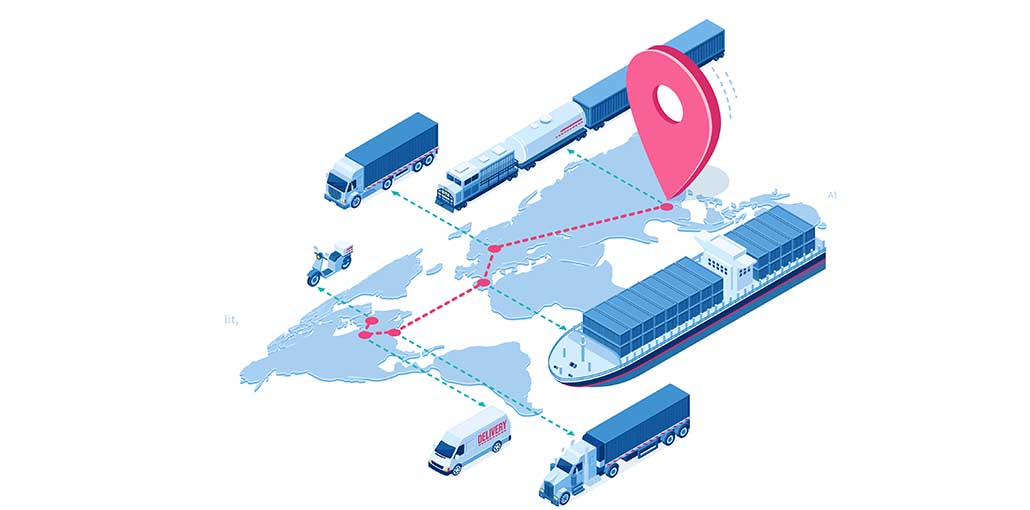Companies desire to improve service levels but also to reduce costs. Both of these goals can often conflict. How can you achieve the best balance? Supply Chain Network Design is about that. Supply chain network design used to be done on a one-off basis or as a project. Increasing volatility and uncertainty have made this obsolete. To adapt to changing business landscapes, companies are running models on a quarterly and sometimes even more frequent basis. Let’s explore the concept of network design, and how it can benefit your company.
Defining supply chain network design
Two things are important in supply chain network design:
- Find your supply chain’s footprint: where to place facilities and how big they should be.
- Identifying the flow of products through the supply chain.
The design of the supply chain network will affect the company’s capacity and the movement of raw materials and finished goods from the source to the end of consumption. Advanced mathematical modeling is often used to support all of these functions. Many network design tools have a back-end solver that can take into account complex business constraints to provide the best answer. How does this work in practice?
Also read: How to Unite Emerging Supply Chain Management Technology Trends
Commonly use cases for supply chain network design
In most cases, network design is part of strategic planning. There are some exceptions, however, where network design software is able to fulfill operational or tactical needs.
Strategic network design: You should model in monthly or annual time buckets and ensure that your cost functions are sufficient to support strategic decisions. For example, you can use network design to:
- Reduce “hard-coded” costs
- Optimize service levels
- Make DC Open / close decisions
- Optimize customer to DC allocations
- Optimize transport flows
- Optimize supplier, production, and DC volumes
- Manage capacity constraints
- Understand the cost to serve
- Perform M&A due diligence and post M&A rationalization
- Mitigate risks for disruptions
- Prepare business cases for investment
- Optimize carbon emissions
Tactical planning: Network design can be used for cut-capacity planning or support S&OP processes with a monthly supply/demand balance solve. However, it is possible to better manage the collaboration and process aspects of S&OP with a tool that was specifically created for this purpose.
Operational planning: A network design tool can be used to plan operations. For example, spare parts are placed at forwarding stock locations within an MRO (maintenance, repair, and operation) environment. This can be done at the SKU level and carried out weekly, by example.
How does supply chain network design help your business?
The use cases show that designing a supply network involves complex and multi-million-dollar decisions. Gartner analysts recommend that organizations make network design a core component of their supply chain analytics efforts. The four most important ways supply chain network design can benefit you are summarized below.
1. Have open and honest conversations with business sponsors; Make data-based decisions
The supply chain is too complex for people to make decisions based only on their gut feelings and Excel. It can be extremely helpful to have a digital representation that allows you to model different scenarios and make assumptions in order to make complex decisions. As BT’s Transformation Director, David Mackenzie, says:
2. Exposing risks and building an agile and resilient supply chain
Supply chain leaders who are forward-thinking use network design to increase resilience. We don’t know when the next trade war, pandemic, or hurricane will strike. You need to be ready to respond quickly to any unexpected disruptions. Unexpected disruptions should be modeled, understood, and a plan put in place to minimize their negative impact on your bottom line. It is easier to assess the potential impact of disruptions on your supply chain and reduce risks with a technology that allows you to optimize and scenario model.
Also read: Top 10 Mobile Apps for Supply Chain Managements
3. Minimize costs
Evaluation of scenarios can help you identify inefficiencies and save money, and also helps you manage the complicated trade-off between cost and resilience. Network design can result in savings of 2-5 percent in logistics costs. To find out how you can save money in your industry, visit our benefits calculator.
4. Optimize service levels
Network design can be used to optimize customer service opportunities, whether you are looking to provide the best service possible to Tier one customers or the best in the market. Scenario modeling allows you to better assess the impact of switching between multi-DC fulfillment. It also helps you to better manage fulfillment and reduce lead times.










Leave a comment